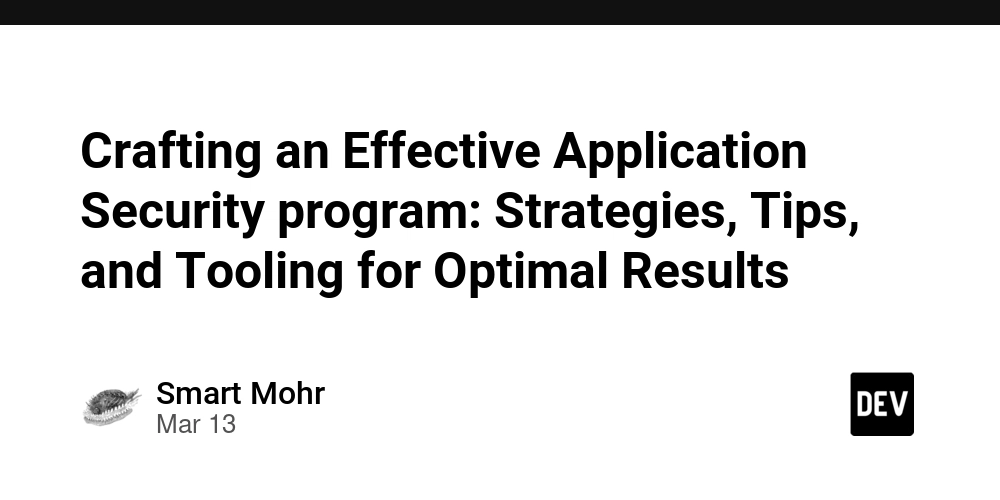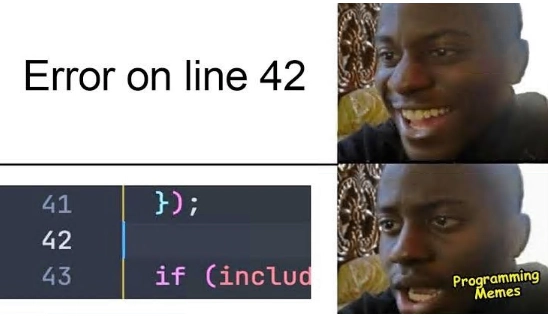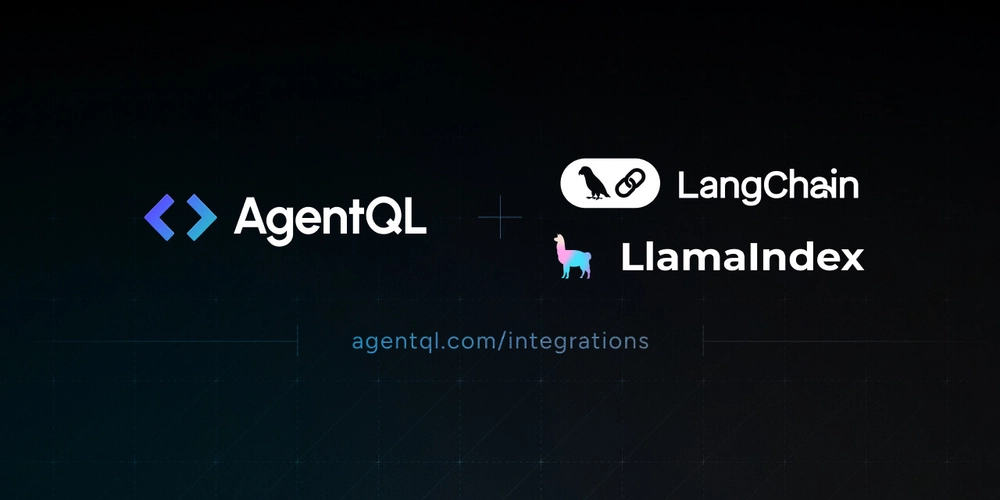Crafting an Effective Application Security program: Strategies, Tips, and Tooling for Optimal Results
AppSec is a multi-faceted, comprehensive approach that goes well beyond simple vulnerability scanning and remediation. The constantly evolving threat landscape, along with the speed of technological advancement and the growing complexity of software architectures calls for a holistic, proactive strategy that seamlessly integrates security into each phase of the development lifecycle. This comprehensive guide explores the most important elements, best practices and the latest technology to support a highly-effective AppSec programme. It empowers companies to increase the security of their software assets, mitigate risks and foster a security-first culture. At the core of the success of an AppSec program is a fundamental shift in mindset that views security as a vital part of the development process rather than an afterthought or a separate undertaking. This paradigm shift requires an intensive collaboration between security teams operators, developers, and personnel, breaking down the silos and fostering a shared belief in the security of the software that they design, deploy, and manage. In embracing a DevSecOps approach, organizations are able to integrate security into the fabric of their development workflows, ensuring that security considerations are considered from the initial stages of ideation and design all the way to deployment and continuous maintenance. A key element of this collaboration is the creation of clear security guidelines that include standards, guidelines, and policies that provide a framework for secure coding practices threat modeling, and vulnerability management. The policies must be based on industry standard practices, like the OWASP Top Ten, NIST guidelines and the CWE (Common Weakness Enumeration) as well as taking into account the particular demands and risk profiles of each organization's particular applications as well as the context of business. By codifying these policies and making them accessible to all stakeholders, organizations can guarantee a consistent, standardized approach to security across all their applications. It is essential to invest in security education and training programs to aid in the implementation of these guidelines. These initiatives should aim to provide developers with the information and abilities needed to create secure code, recognize potential vulnerabilities, and adopt best practices for security throughout the development process. The training should cover a wide range of topics, from secure coding techniques and common attack vectors to threat modelling and design for secure architecture principles. Organizations can build a solid base for AppSec by encouraging an environment that encourages constant learning, and by providing developers the tools and resources they require to incorporate security into their daily work. In addition to educating employees organisations must also put in place solid security testing and validation procedures to detect and fix weaknesses before they are exploited by criminals. This is a multi-layered process which includes both static and dynamic analysis methods along with manual penetration testing and code reviews. Static Application Security Testing (SAST) tools are able to analyze the source code to identify potential vulnerabilities, such as SQL injection cross-site scripting (XSS), and buffer overflows, early in the process of development. Dynamic Application Security Testing (DAST) tools on the other hand can be utilized to simulate attacks against operating applications, identifying weaknesses which aren't detectable by static analysis alone. Although these automated tools are essential to detect potential vulnerabilities on a an escalating rate, they're not an all-purpose solution. Manual penetration testing conducted by security experts is equally important for identifying complex business logic flaws that automated tools may overlook. By combining automated testing with manual validation, businesses can get a greater understanding of their application security posture and prioritize remediation efforts based on the severity and potential impact of vulnerabilities that are identified. To further enhance the effectiveness of an AppSec program, companies should take into consideration leveraging advanced technology such as artificial intelligence (AI) and machine learning (ML) to boost their security testing capabilities and vulnerability management. AI-powered tools are able look over large amounts of data from applications and code and spot patterns and anomalies which may indicate security issues. They also be taught from previous vulnerabilities and attack patterns, continually increasing their capability to spot and prevent emerging security threats. Code property graphs are an exciting AI application within AppSec. They can be used to find and correct vulnerabilities more quickly and efficiently. CPGs provide a rich, semantic representation of an application's codebase, capturing

AppSec is a multi-faceted, comprehensive approach that goes well beyond simple vulnerability scanning and remediation. The constantly evolving threat landscape, along with the speed of technological advancement and the growing complexity of software architectures calls for a holistic, proactive strategy that seamlessly integrates security into each phase of the development lifecycle. This comprehensive guide explores the most important elements, best practices and the latest technology to support a highly-effective AppSec programme. It empowers companies to increase the security of their software assets, mitigate risks and foster a security-first culture.
At the core of the success of an AppSec program is a fundamental shift in mindset that views security as a vital part of the development process rather than an afterthought or a separate undertaking. This paradigm shift requires an intensive collaboration between security teams operators, developers, and personnel, breaking down the silos and fostering a shared belief in the security of the software that they design, deploy, and manage. In embracing a DevSecOps approach, organizations are able to integrate security into the fabric of their development workflows, ensuring that security considerations are considered from the initial stages of ideation and design all the way to deployment and continuous maintenance.
A key element of this collaboration is the creation of clear security guidelines that include standards, guidelines, and policies that provide a framework for secure coding practices threat modeling, and vulnerability management. The policies must be based on industry standard practices, like the OWASP Top Ten, NIST guidelines and the CWE (Common Weakness Enumeration) as well as taking into account the particular demands and risk profiles of each organization's particular applications as well as the context of business. By codifying these policies and making them accessible to all stakeholders, organizations can guarantee a consistent, standardized approach to security across all their applications.
It is essential to invest in security education and training programs to aid in the implementation of these guidelines. These initiatives should aim to provide developers with the information and abilities needed to create secure code, recognize potential vulnerabilities, and adopt best practices for security throughout the development process. The training should cover a wide range of topics, from secure coding techniques and common attack vectors to threat modelling and design for secure architecture principles. Organizations can build a solid base for AppSec by encouraging an environment that encourages constant learning, and by providing developers the tools and resources they require to incorporate security into their daily work.
In addition to educating employees organisations must also put in place solid security testing and validation procedures to detect and fix weaknesses before they are exploited by criminals. This is a multi-layered process which includes both static and dynamic analysis methods along with manual penetration testing and code reviews. Static Application Security Testing (SAST) tools are able to analyze the source code to identify potential vulnerabilities, such as SQL injection cross-site scripting (XSS), and buffer overflows, early in the process of development. Dynamic Application Security Testing (DAST) tools on the other hand can be utilized to simulate attacks against operating applications, identifying weaknesses which aren't detectable by static analysis alone.
Although these automated tools are essential to detect potential vulnerabilities on a an escalating rate, they're not an all-purpose solution. Manual penetration testing conducted by security experts is equally important for identifying complex business logic flaws that automated tools may overlook. By combining automated testing with manual validation, businesses can get a greater understanding of their application security posture and prioritize remediation efforts based on the severity and potential impact of vulnerabilities that are identified.
To further enhance the effectiveness of an AppSec program, companies should take into consideration leveraging advanced technology such as artificial intelligence (AI) and machine learning (ML) to boost their security testing capabilities and vulnerability management. AI-powered tools are able look over large amounts of data from applications and code and spot patterns and anomalies which may indicate security issues. They also be taught from previous vulnerabilities and attack patterns, continually increasing their capability to spot and prevent emerging security threats.
Code property graphs are an exciting AI application within AppSec. They can be used to find and correct vulnerabilities more quickly and efficiently. CPGs provide a rich, semantic representation of an application's codebase, capturing not just the syntactic structure of the code, but additionally the intricate relationships and dependencies between different components. AI-driven tools that leverage CPGs are able to conduct an analysis that is context-aware and deep of the security posture of an application, identifying weaknesses that might be missed by traditional static analysis.
CPGs can be used to automate the process of remediating vulnerabilities by employing AI-powered methods for code transformation and repair. In order to understand the semantics of the code as well as the nature of the weaknesses, AI algorithms can generate specific, contextually-specific solutions that tackle the root of the problem instead of merely treating the symptoms. This strategy not only speed up the remediation process but also decreases the possibility of introducing new vulnerabilities or breaking existing functions.
Another important aspect of an effective AppSec program is the incorporation of security testing and validation into the continuous integration and continuous deployment (CI/CD) process. https://www.linkedin.com/posts/qwiet_appsec-webinar-agenticai-activity-7269760682881945603-qp3J By automating security checks and embedding them into the process of building and deployment, organizations can catch vulnerabilities in the early stages and prevent them from being introduced into production environments. This shift-left approach to security allows for more efficient feedback loops, which reduces the amount of time and effort needed to find and fix problems.
In order to achieve this level of integration enterprises must invest in right tooling and infrastructure for their AppSec program. This includes not only the security tools but also the platforms and frameworks that allow seamless automation and integration. Containerization technologies like Docker and Kubernetes are able to play an important role in this regard, giving a consistent, repeatable environment to run security tests, and separating potentially vulnerable components.
Alongside the technical tools effective communication and collaboration platforms can be crucial in fostering the culture of security as well as helping teams across functional lines to effectively collaborate. Jira and GitLab are systems for tracking issues that allow teams to monitor and prioritize security vulnerabilities. Tools for messaging and chat like Slack and Microsoft Teams facilitate real-time knowledge sharing and communications between security professionals.
The performance of any AppSec program is not solely dependent on the technologies and tools used, but also the people who are behind the program. To create a secure and strong culture requires leadership buy-in as well as clear communication and an effort to continuously improve. By instilling a sense of shared responsibility for security, encouraging dialogue and collaboration, as well as providing the appropriate resources and support, organizations can make sure that security isn't just a box to check, but an integral element of the process of development.
To ensure long-term viability of their AppSec program, companies must be focusing on creating meaningful metrics and key performance indicators (KPIs) to measure their progress and pinpoint areas to improve. These metrics should span the entire application lifecycle, from the number of vulnerabilities identified in the initial development phase to time required to fix issues and the overall security of the application in production. These indicators can be used to show the value of AppSec investment, to identify trends and patterns, and help organizations make decision-based decisions based on data on where to focus on their efforts.
Additionally, businesses must engage in continual educational and training initiatives to stay on top of the rapidly evolving security landscape and new best practices. This may include attending industry events, taking part in online courses for training as well as collaborating with security experts from outside and researchers in order to stay abreast of the latest trends and techniques. Through the cultivation of a constant learning culture, organizations can assure that their AppSec program is able to be adapted and robust to the latest challenges and threats.
It is crucial to understand that application security is a constant process that requires a sustained investment and commitment. Organizations must constantly reassess their AppSec strategy to ensure that it remains effective and aligned with their goals for business as new technologies and development practices are developed. Through adopting a continuous improvement approach, encouraging collaboration and communication, as well as using advanced technologies like CPGs and AI organisations can build a robust and adaptable AppSec program that does not only safeguard their software assets but also allow them to be innovative in an increasingly challenging digital landscape.https://www.linkedin.com/posts/qwiet_appsec-webinar-agenticai-activity-7269760682881945603-qp3J






















































.jpg)
%20Abstract%20Background%20112024%20SOURCE%20Amazon.jpg)



















































































































![[The AI Show Episode 142]: ChatGPT’s New Image Generator, Studio Ghibli Craze and Backlash, Gemini 2.5, OpenAI Academy, 4o Updates, Vibe Marketing & xAI Acquires X](https://www.marketingaiinstitute.com/hubfs/ep%20142%20cover.png)
































































































































![From drop-out to software architect with Jason Lengstorf [Podcast #167]](https://cdn.hashnode.com/res/hashnode/image/upload/v1743796461357/f3d19cd7-e6f5-4d7c-8bfc-eb974bc8da68.png?#)





































































































.png?#)





.jpg?#)
































_Christophe_Coat_Alamy.jpg?#)











































































































![Rapidus in Talks With Apple as It Accelerates Toward 2nm Chip Production [Report]](https://www.iclarified.com/images/news/96937/96937/96937-640.jpg)









































































































































